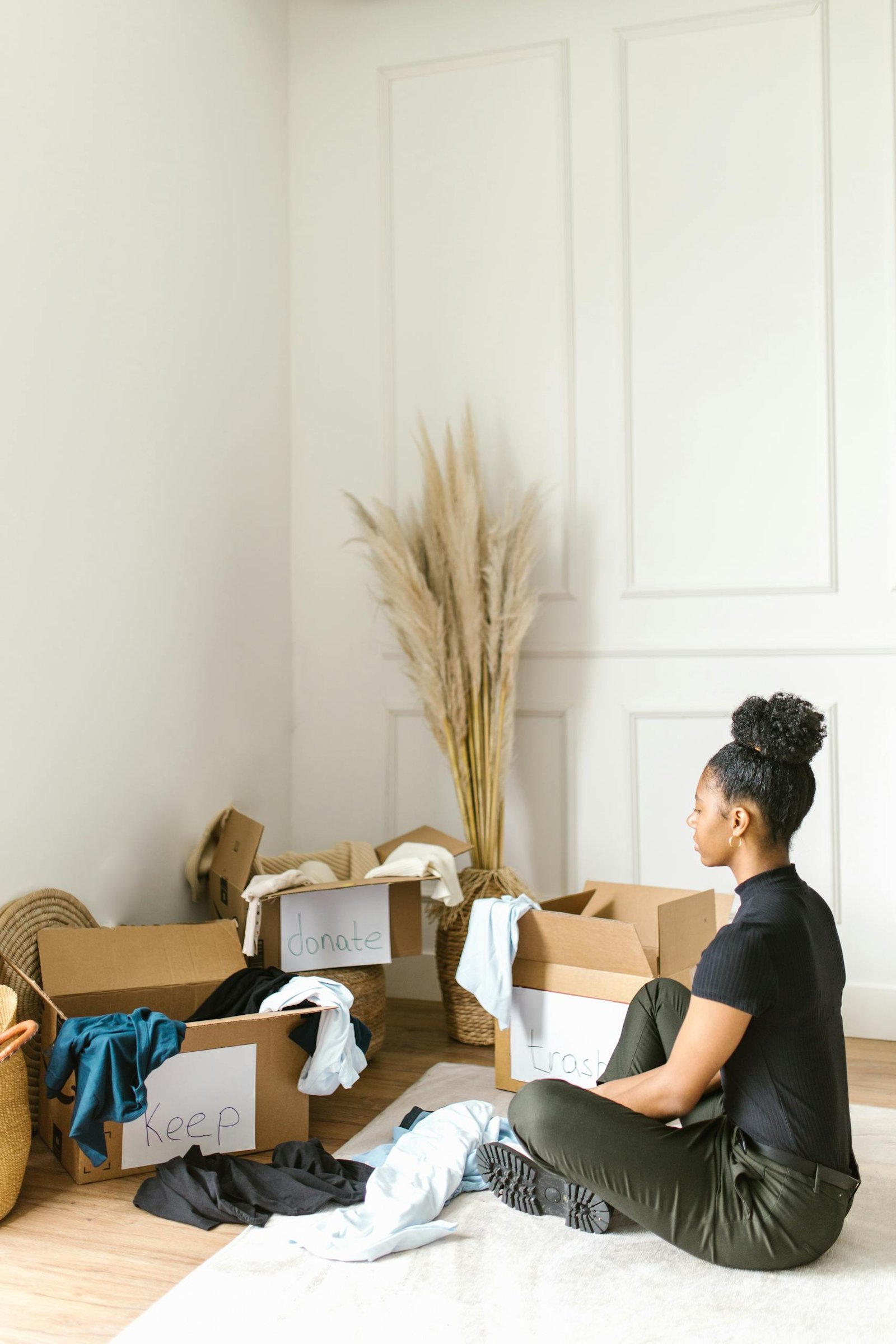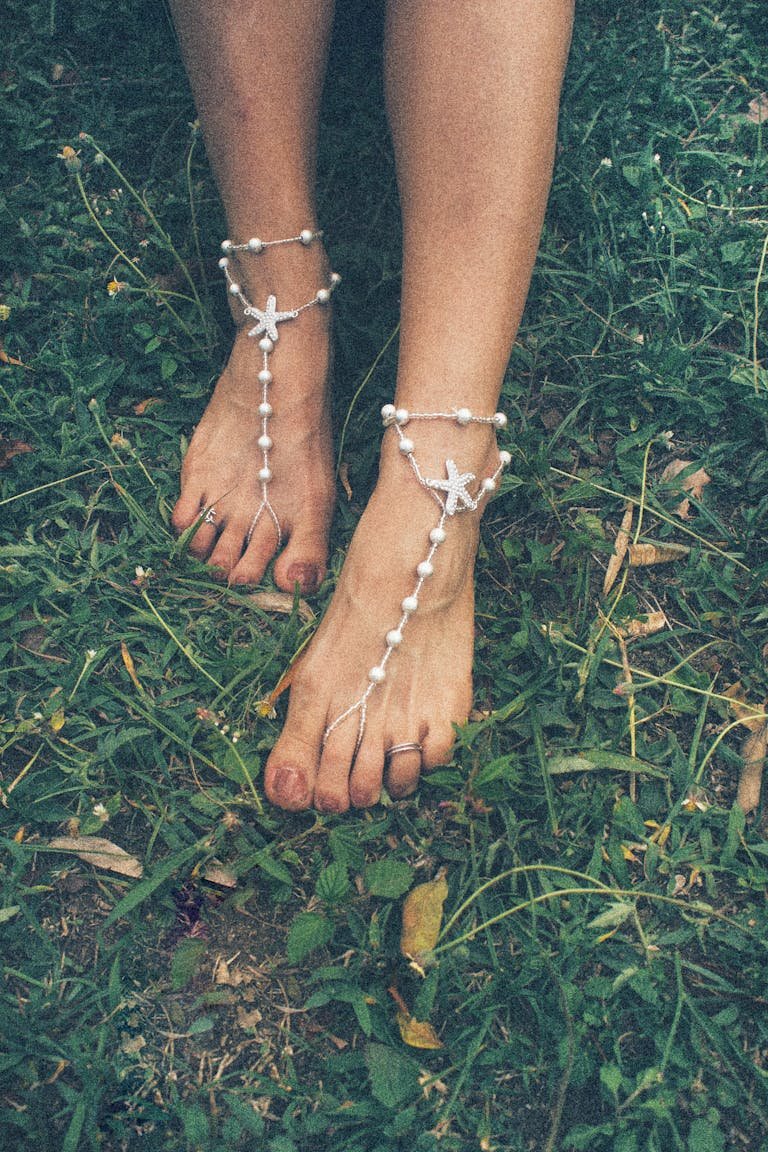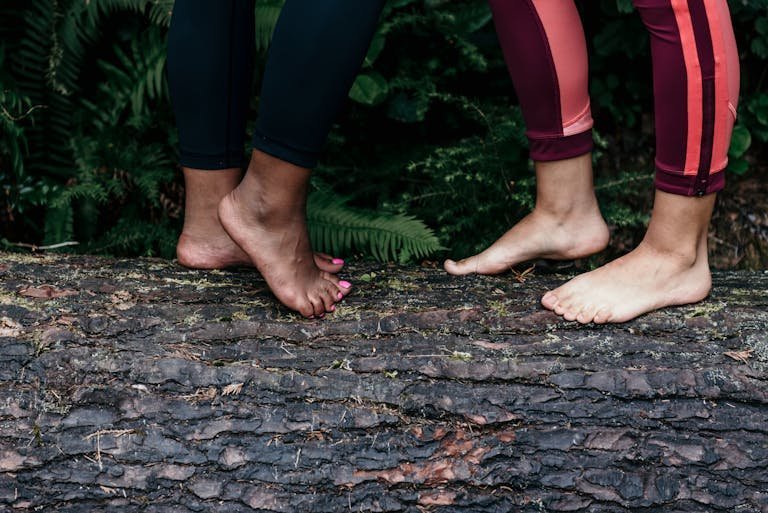Beginner’s Guide to Decluttering: Transform Your Space and Life
Do you ever look around you and wonder where did all this stuff come from? If this describes you the you need our beginner’s guide to decluttering: Transform your space and Life!
Clutter has become an unwelcome companion in many of our lives. It creeps in into our homes, offices, and even our digital spaces. Do you ever feel like you spend time tidying up your spaces only for the tide to come back in? Do you turn your back on a clean space, only to find the clutter scattered around you again, causing stress and reducing productivity?
This comprehensive guide will introduce the process of decluttering, which we’ll look at in more detail on this site. The aim is to help you create a more organised, peaceful, and efficient living environment.
Understanding Clutter and Its Impact
Before diving into the decluttering process, it’s essential to understand what clutter is and how it affects our lives.
What is Clutter?
Clutter is any collection of items that are disorganised, unnecessary, or excessive. It can be physical (like piles of clothes or stacks of papers) or digital (such as a cluttered email inbox or a disorganised computer desktop).
The Negative Effects of Clutter
Clutter can have far-reaching consequences on our mental and physical well-being:
- Increased stress and anxiety
- Reduced action or productivity
- Difficulty focusing
- Wasted time searching for items
- Decreased creativity
- Potential health hazards (dust accumulation, tripping hazards)
Understanding these impacts can provide motivation for your decluttering journey.
The Benefits of Decluttering
Decluttering offers numerous benefits that can significantly improve your quality of life:
- Reduced stress and anxiety
- Improved focus and productivity
- More free time
- Enhanced creativity
- Better sleep
- Easier cleaning and maintenance
- Improved relationships (less arguing over mess)
Getting Started: Preparing for Your Decluttering Journey
Before you start tossing items into boxes, it’s important to prepare mentally and logistically for the decluttering process. Be considerate of of others and start with your stuff first.
Set an Intention or Goal
Define what you want to achieve through decluttering. This might include:
- Creating a more peaceful living environment
- Improving productivity in your home office
- Making room for new activities or hobbies
- Preparing for a move or downsizing
Having a clear intention will help you stay motivated throughout the process.
Start Small
Decluttering can be overwhelming, especially for beginners. Start with a small, manageable area to build momentum and confidence. This could be:
- A single drawer
- Your nightstand
- The kitchen counter
- Your car
Gather Supplies
Before you begin, gather some stuff in order to get rid of the stuff:
- Boxes or bins for sorting (Keep, Donate, Sell, Trash)
- Trash bags
- Cleaning supplies
- Labels and markers
Having all these items on hand will make the process smoother and avoid you stalling at the first hurdle.
The Decluttering Process: Step-by-Step Guide
Now that you’re prepared, it’s time to start decluttering. Follow these steps for each area you tackle:
1. Empty the Space
Start by completely emptying the space you’re decluttering. This gives you a clean slate and allows you to see everything you own in that area.
2. Sort Items
As you remove items, sort them into four categories:
- Keep: Items you use regularly or that bring you joy
- Donate: Items in good condition that someone else could use
- Sell: Valuable items you no longer need
- Trash: Items that are broken, expired, or unusable
Be honest with yourself during this process. If you haven’t used an item in the past year, it’s likely you can let it go.
3. Clean the Space
Once the area is empty, take the opportunity to clean it thoroughly. Dust, vacuum, or wipe down surfaces before putting items back.
4. Organise and Return Items
Return only the “Keep” items to the space, organising them in a way that makes sense for your lifestyle. Use organisers, tubs/bins, or shelves to keep everything tidy and accessible.
5. Deal with Other Categories
Promptly handle the other categories:
- Donate: Schedule a pickup or drop off items at a local charity. Whilst we want others to benefit from our no longer needed stuff, please avoid burdening the charity with getting rid of broken or damaged items that should really be considered.
- Sell: List items online or plan a garage sale
- Trash: Dispose of items responsibly, recycling when possible
Decluttering Different Areas of Your Home
Each area of your home may require a slightly different approach to decluttering. Here are some initial tips for specific spaces. We’ll explore these in more detail on this site:
Bedroom(s)
- Start with your closet, using the “backwards hanger” trick. Turn your hangers around each time you wear something and then review after 3 months to see those items that remain untouched.
- Tackle under-bed storage – It’s all too easy to hoard items here as they can be seen as “out of sight and out of mind”. Clutter is never really out of sight to your psyche! It knows it lurking there waiting to be dealt with.
- Minimise items on nightstands and dressers – Removing this visual clutter will help you rest!
Kitchen
- Check the expiration dates on food items
- Donate duplicate utensils or gadgets
- Organise cabinets with shelf risers or hidden storage
Living Room
- Reduce decorative items to those you truly love
- Organise books and magazines
- Create a system for remote controls and electronics
Home Office
- Digitise papers when possible
- Implement a filing system for important documents
- Organise desk drawers with dividers
Digital Decluttering
It’s not just the stuff surrounding us in our homes. Our devices have virtual clutter too that can be just as overwhelming as physical clutter. Here are some tips for decluttering your digital spaces:
Email Decluttering
- Unsubscribe from unnecessary newsletters
- Create folders for important emails
- Use the “2-minute rule” for quick responses. If it can be done it 2 minutes do it now! The mental baggage of not doing it or revisiting it later is simply not worth it!
Computer Decluttering
- Organise files into a simple and logical folder structure
- Delete unused programs and files
- Clean up your desktop
Phone Decluttering
- Delete unused apps
- Organise apps into folders
- Clear out old text messages and voicemails
Maintaining a Clutter-Free Space
Decluttering is not a one-time event; it’s an ongoing process. Here are some strategies to help maintain your newly organised spaces:
Implement the One In, One Out Rule
For every new item you bring into your home, remove one item. This helps prevent clutter from accumulating again.
Regular Maintenance Sessions
Schedule short, regular decluttering sessions (15-30 minutes) to keep on top of potential clutter hotspots.
Create Designated Spaces
Everything in your home that you intend to keep should have its own “home”. Designate a place! This makes it easier to put things away, helps everyone know where to find things and prevents clutter from building up.
Mindful Purchasing
We want to be intentional and so before buying something new, ask yourself:
- Do I really need this?
- Do I have space for it?
- Will I use it regularly?
Being mindful of your purchases can significantly reduce the amount of clutter entering your home.
Overcoming Common Decluttering Challenges
Even with the best intentions, you may encounter some challenges during your decluttering journey. Here’s how to overcome them:
Sentimental Items
This is a tough one! Letting go of sentimental items can be difficult. Consider these strategies:
- Take photos of items before letting them go – Click here to see our guide to decluttering photos
- Keep one representative item from a collection
- Repurpose sentimental items into something useful
Overwhelm
If you feel overwhelmed, remember to:
- Break tasks into smaller, manageable chunks
- Set a timer and work for short periods
- Celebrate small victories along the way
Family Resistance
If family members are resistant to decluttering:
- Lead by example – That means start with your stuff first!
- Involve them in the decision-making process
- Explain the benefits of decluttering
- Start with shared spaces and respect personal areas
The Psychology of Decluttering
Understanding the psychological aspects of clutter can help you in your decluttering journey:
Emotional Attachment to Objects
We often attach emotions to our physical things. Recognising this can help you make more rational decisions about what to keep.
Fear of Scarcity
Many people hold onto items out of fear they might need them someday. Remember that most items can be replaced if truly necessary.
Perfectionism
Don’t let perfect be the enemy of good. Progress is more important than perfection in decluttering.
Conclusion
Decluttering is a powerful tool for creating a more peaceful, productive, and enjoyable living environment. Clear spaces really do help create clear minds! By following this guide and consistently applying decluttering principles, you can transform your space and, by extension, your life.
Remember, decluttering is a journey, not a destination. Be patient with yourself and celebrate your progress along the way.
We’ll leave you with 3:
- Start small and be consistent: Begin with a single drawer or small area, and make decluttering a regular habit to prevent overwhelm and maintain your progress.
- Use the four-category system: Sort items into Keep, Donate, Sell, and Trash categories to streamline the decision-making process and ensure everything has a clear destination.
- Address the root causes of clutter: Implement systems like the “one in, one out” rule and practice mindful purchasing to prevent clutter from accumulating in the future.
By implementing any of these and embracing the decluttering process, you’ll be well on your way to creating a more organised, peaceful, and enjoyable living space. Remember, the goal is progress, not perfection, and every small step towards decluttering is a step towards a more serene and efficient lifestyle.







